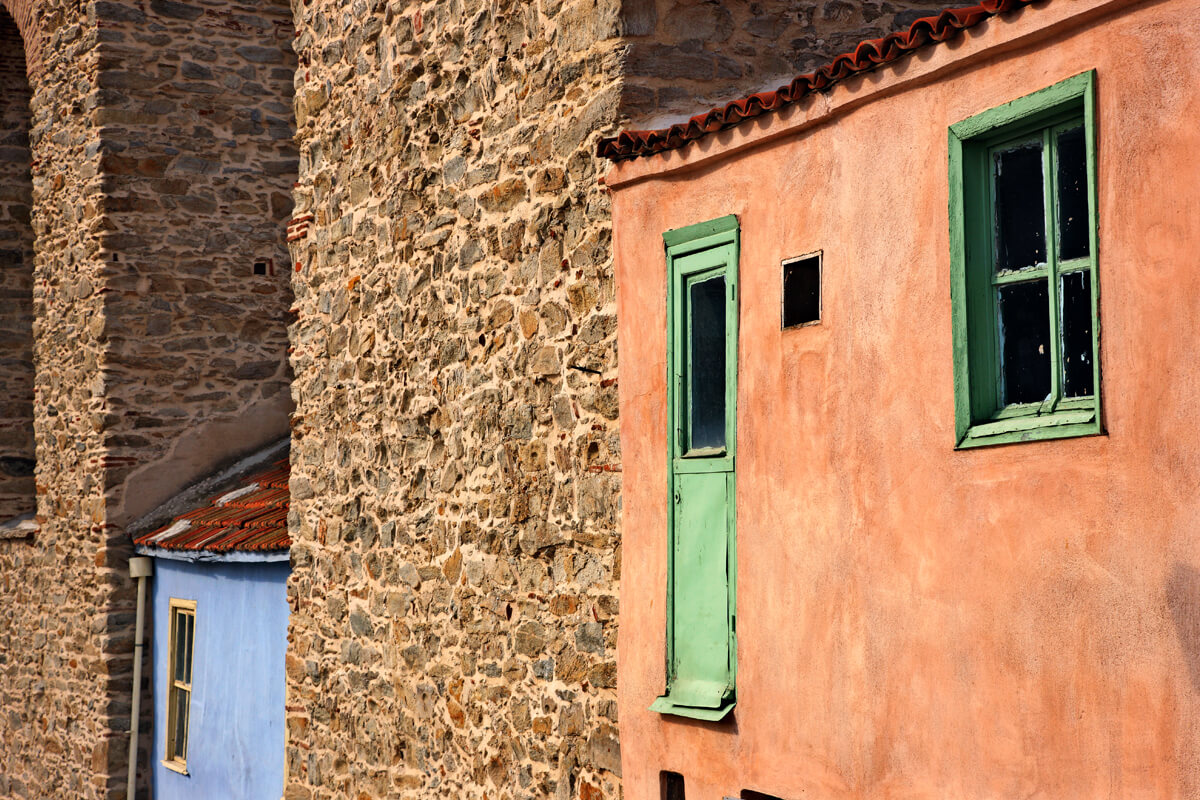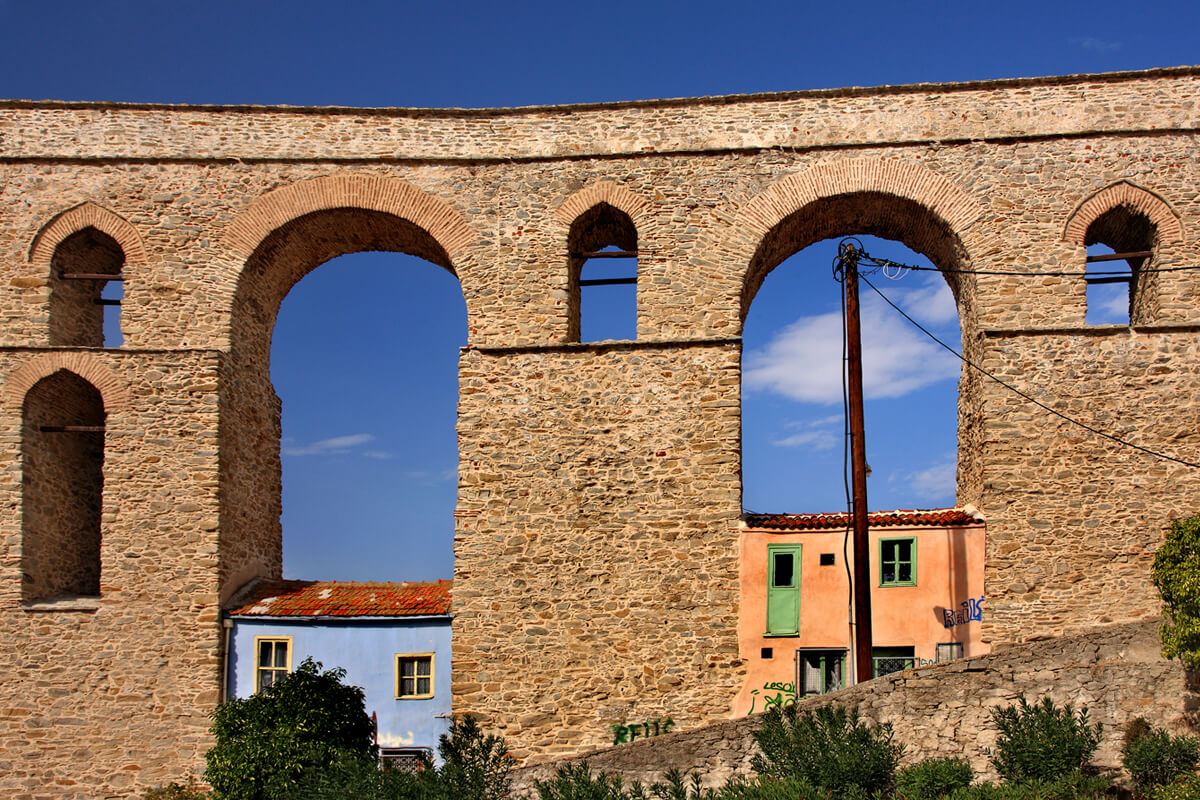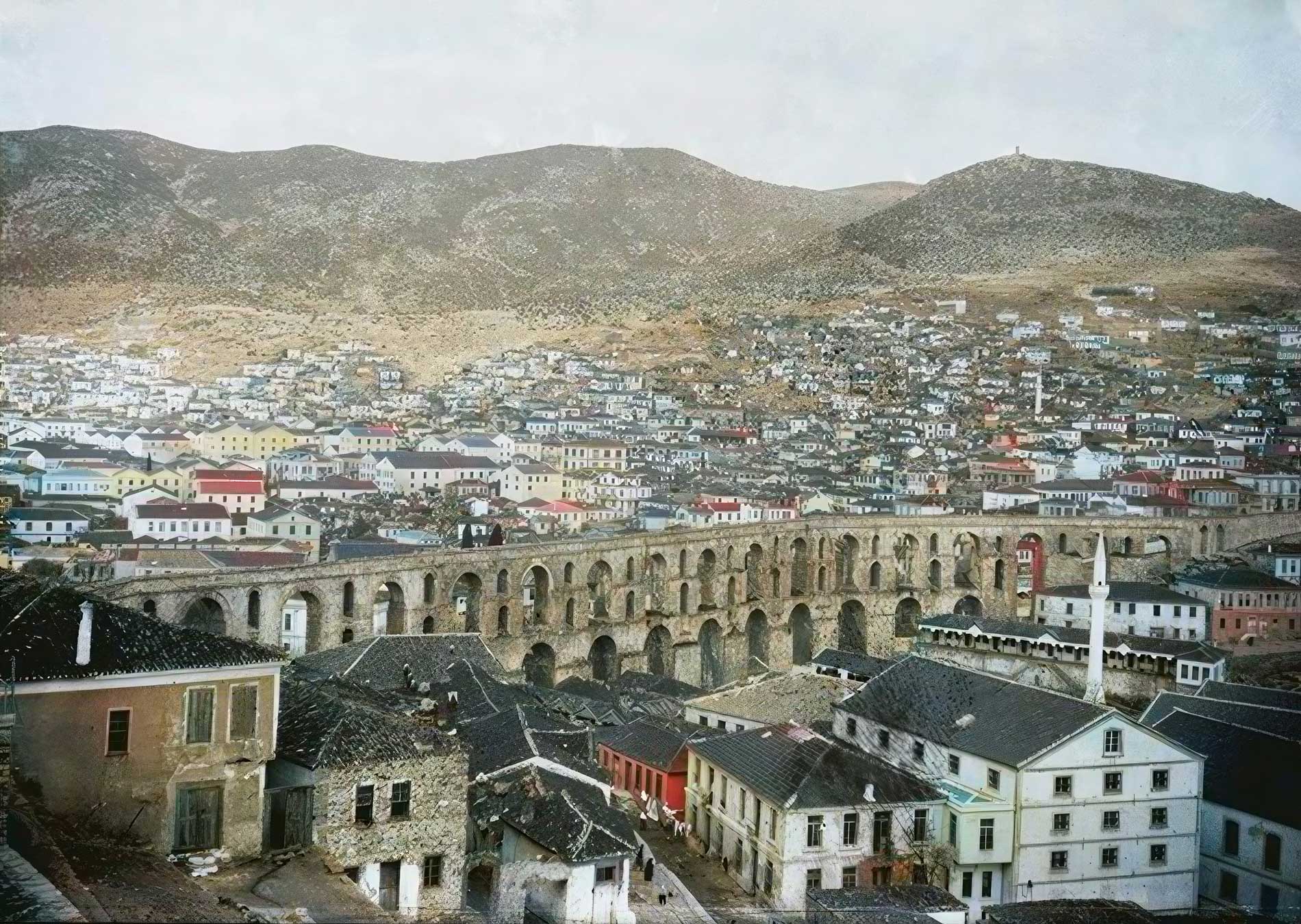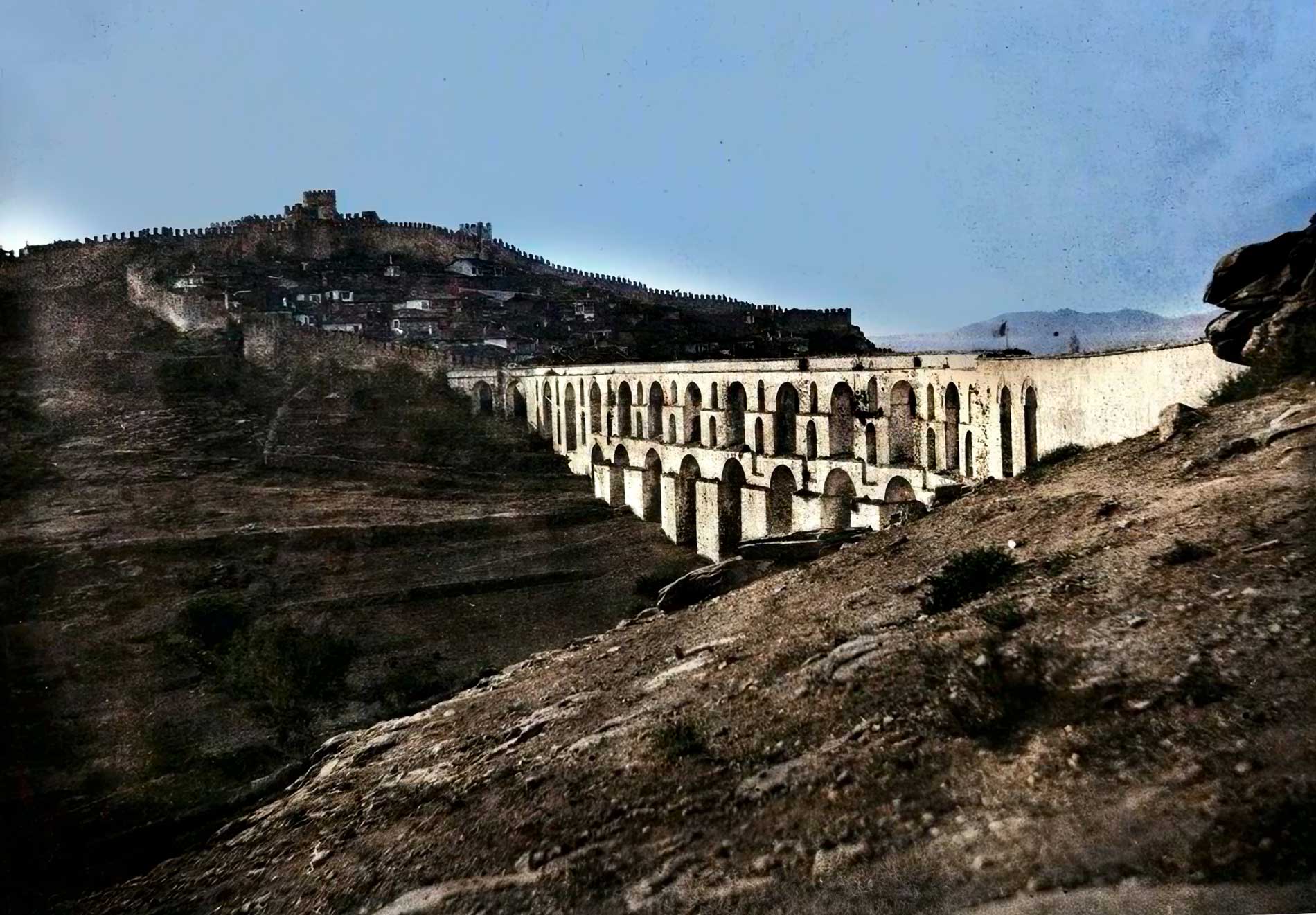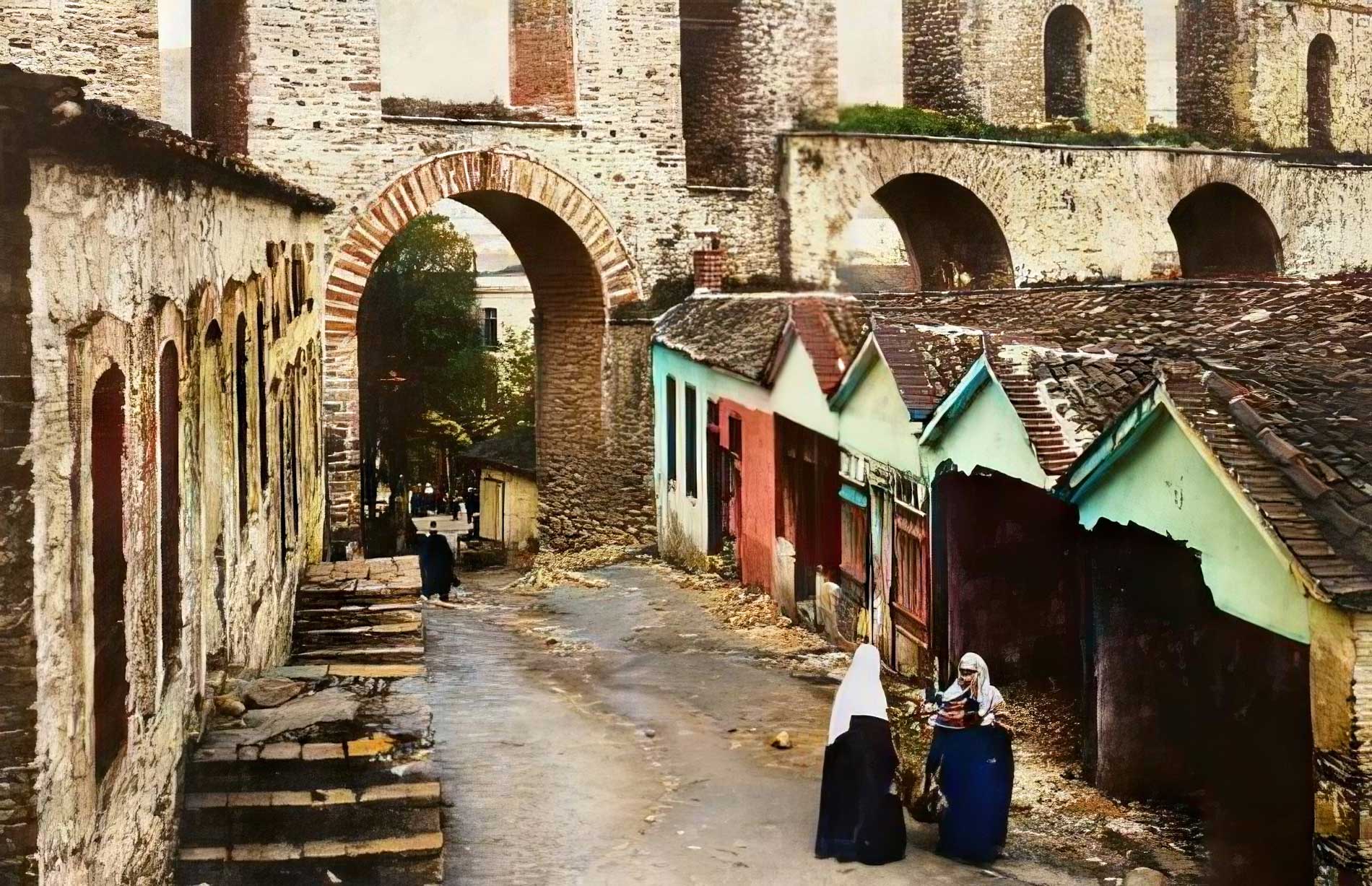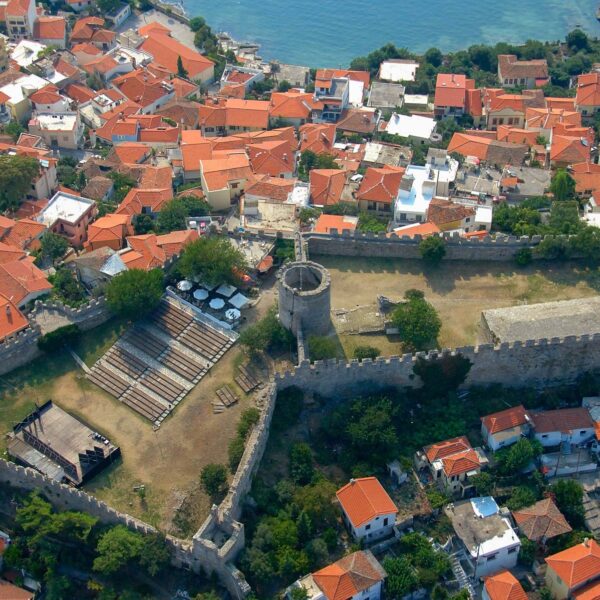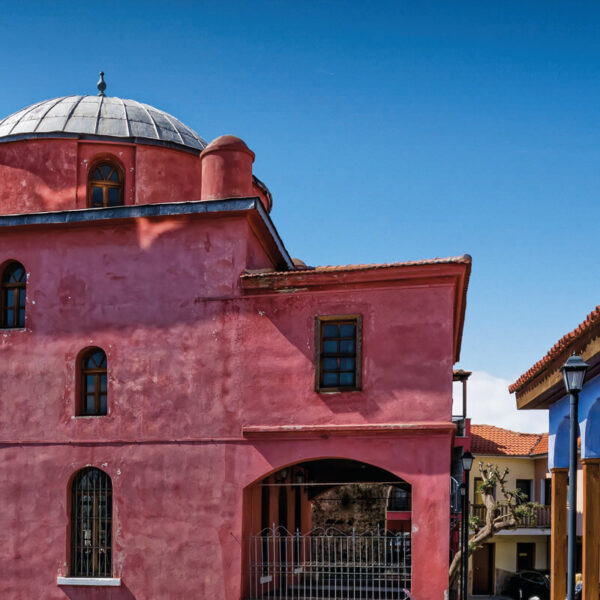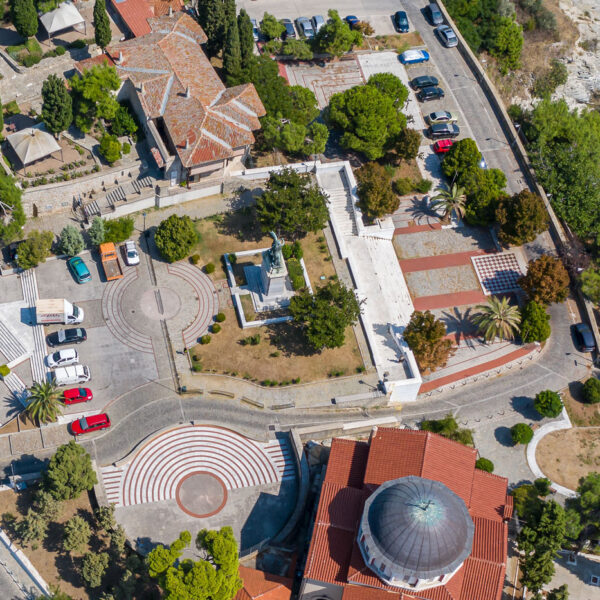Kamares - Old Aqueduct of Kavala
The Old Aqueduct of Kavala, known as the Kamares (Arches) is one of the most beautiful and impressive monuments of the city. Standing above the lower town with its arches, the aqueduct is a reminder of Kavala’s strategic and architectural significance. Although it doesn’t serve any purpose today, it’s a part of the city’s skyline and a symbol of its Ottoman heritage. Built in the early 16th century it revived the city after a period of devastation and is one of the most photographed landmarks of Kavala.
The Kamares is a two-tiered aqueduct of 280 meters long and 25 meters high. It’s made mainly of local granite with Ottoman style brickwork in various parts, especially in the upper arches.
The structure has a double tier of arches. The lower tier has 11 wide and tall arches, each about 5.6 meters wide and 12 meters high. Above them the upper tier has narrower arches, about 5 meters wide and 8 meters high. Between the main arches of the upper tier the stone piers are pierced by two smaller arches stacked on top of each other, with the lower one being slightly wider and taller than the upper one. Some of these are supported by visible metal staves.
Spanning the lowland between the base of Mount Lekani and the old city walls on the northeast slope of the Panagia peninsula, the aqueduct was the last link in a sophisticated water supply system. Water was drawn from a spring 400 meters above sea level, about 6 kilometers away, in the area known as “Mother of the Water” (i Mana tou Nerou), also called Soubasi or the Three Karagatsia (Elms).
This system included ceramic pipes, secondary aqueducts and auxiliary channels that brought water to the citadel of Kavala. Inside the fortress the water was distributed to cisterns, fountains, public baths and important buildings. The first house in Kavala to have running water was the House of Mehmet Ali, built around 1780-1790.
Although the current aqueduct is 16th century, the site likely had earlier infrastructure. Historical and archaeological evidence suggests a Roman aqueduct may have existed in the same spot, later reused or built over during the Byzantine period. It is believed the original was destroyed in the 14th century.
A defensive wall from the early 14th century, part of the Byzantine fortifications of the Acropolis of Kavala, may have also served as an aqueduct. If so, it would be a rare example of such infrastructure in the Byzantine world, as most Byzantine cities relied on wells and cisterns rather than aqueducts.
The current aqueduct was built between 1520-1536 by Pargalı Ibrahim Pasha, Grand Vizier of Suleiman the Magnificent. Ibrahim Pasha, who also built the nearby Ibrahim Pasha Mosque (now St. Nicholas Church), oversaw the rebuilding of the city, then called Christoupolis, after the 1391 Ottoman-Venetian conflict had destroyed and depopulated the city.
This urban renewal included not only the aqueduct but also religious, military and civic buildings to restore the city’s infrastructure and population. The Kamares was a key part of this new system, bringing fresh water from the hills into the heart of the walled city.
The aqueduct was in use until the early 20th century and required very little maintenance. The only major repair was in 1818, as confirmed by an Ottoman inscription on the west side, dated 1234 in the Islamic Hijri calendar (1818/1819 AD). Further conservation and restoration work was done between 1997-1998 to preserve it for future generations.
Throughout its existence, the Kamares has been both functional and grand. Despite the city growing around it, the aqueduct’s bold shape still evokes Kavala’s layered history and its connections across empires and eras.Today the Kamares is one of Kavala’s most iconic and loved landmarks. Its shape marks the border between the old Panagia district and the lower town. You can see it from many spots in the city but the best views are from Odos Lahana where the aqueduct rises between Mount Lekani and the northeastern slope of the peninsula.
Local Interest
Although not in use anymore, the Kamares still charm visitors with its combination of engineering and beauty. The arches frame the city and are great for photos, especially during sunset when the stone glows.
This monument not only tells the story of a city’s survival and rebirth but also serves as a bridge – literal and symbolic – between the old and the new in the heart of Kavala.
